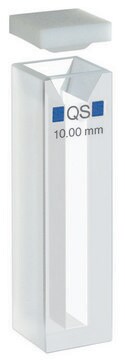General description
We are committed to bringing you greener alternative products, which adhere to one or more of The 12 Principles of Green Chemistry.This antibody is Preservative-free, produced without the harm or sacrifice of animals and exceptionally stable to allow for ambient shipping and storage if needed and thus aligns with "Waste Prevention", "Designing Safer Chemicals" and "Design for Energy Efficiency".
Click here for more information.
ZooMAb® antibodies represent an entirely new generation of recombinant monoclonal antibodies. Each ZooMAb® antibody is manufactured using our proprietary recombinant expression system, purified to homogeneity, and precisely dispensed to produce robust and highly reproducible lot-to-lot consistency. Only top-performing clones are released for use by researchers. Each antibody is validated for high specificity and affinity across multiple applications, including its most commonly used application. ZooMAb® antibodies are reliably available and ready to ship when you need them.
Specificity
Clone 1F15 is a ZooMAb® rabbit recombinant monoclonal antibody that specifically detects Optic atrophy protein 1 (OPA1). It targets an epitope within 22 amino acids from the C-terminal region.
Immunogen
KLH-conjugated linear peptide corresponding to 22 amino acids from the C-terminal region of human Optic atrophy protein 1 (OPA1).
Application
Quality Control Testing
Evaluated by Western Blotting in Rat kidney tissue lysate.
Western Blotting Analysis: A 1:10,000 dilution of this antibody detected OPA1 in Rat kidney tissue lysate.
Tested Applications
Western Blotting Analysis: A 1:1,000 dilution from a representative lot detected OPA1 in C2C12 cell lysate.
Affinity Binding Assay: A representative lot of this antibody bound OPA1 peptide with a KD of 1.5 x 10-7 in an affinity binding assay.
Immunohistochemistry (Paraffin) Analysis: A 1:100 dilution from a representative lot detected OPA1 in Human kidney tissue sections.
Note: Actual optimal working dilutions must be determined by end user as specimens, and experimental conditions may vary with the end user.
Target description
Dynamin-like 120 kDa protein, mitochondrial (UniProt: O60313; also known as EC:3.6.5.5, OPTIC atrophy protein 1) is encoded by the OPA1 (also known as KIAA0567) gene (Gene ID: 4976) in human. OPA1 is a single-pass mitochondrial membrane protein that is synthesized with a TransIT® peptide (aa 1-87), which is subsequently cleaved off to produce the active protein that contains a short mitochondrial matrix domain (aa 88-96), a transmembrane domain (aa 97-113), and a mitochondrial intermembrane domain (aa 114-960). It is detected at contacts sites between endoplasmic reticulum and mitochondrial membranes. It is highly expressed in the retina and is also detected in the brain, testis, heart, skeletal muscle, and other tissues. It serves as a dynamin-related GTPase and is shown to be essential for normal mitochondrial morphology. It regulates the equilibrium between mitochondrial fusion and mitochondrial fission. At least six different isoforms of OPA1 have been described that are produced by alternative splicing. Co-expression of isoform 1 with shorter alternative products is required for its optimal activity in promoting mitochondrial fusion. It binds lipid membranes enriched in negatively charged phospholipids and promotes membrane tubulation. Its intrinsic GTPase activity is reported to be low and is strongly increased by interaction with lipid membranes. OPA1 also plays a role in remodeling cristae and the release of cytochrome c during apoptosis. Proteolytic processing in response to intrinsic apoptotic signals may lead to disassembly of OPA1 oligomers and release of cytochrome c into the mitochondrial intermembrane space. Mutations in this gene have been associated with OPTIC atrophy type 1, which is a dominantly inherited OPTIC neuropathy resulting in progressive loss of visual acuity, leading in many cases to blindness. This ZooMAb® recombinant monoclonal antibody, generated by our propriety technology, offers significantly enhanced specificity, Affinity™, reproducibility, and stability over conventional monoclonals. (Ref.: Anand, R., et al. (2014). J. Cell Biol. 204(6); 919-929; BAN™, T., et al. (2010). Hum. Mol. Genet. 19(11); 2113-2122; Song, Z., et al. (2007). J. Cell Biol. 178(5); 749-755).
Physical form
Purified recombinant rabbit monoclonal antibody IgG, lyophilized in PBS, 5% Trehalose, normal appearance a coarse or translucent resin. The PBS/trehalose components in the ZooMAb formulation can have the appearance of a semi-solid (bead like gel) after lyophilization. This is a normal phenomenon. Please follow the recommended reconstitution procedure in the data sheet to dissolve the semi-solid, bead-like, gel-appearing material. The resulting antibody solution is completely stable and functional as proven by full functional testing. Contains no biocide or preservatives, such as azide, or any animal by-products. Larger pack sizes provided as multiples of 25 µL.
Reconstitution
300 µg/mL after reconstitution at 25 µL per vial. Please refer to guidance on suggested starting dilutions and/or titers per application and sample type.
Storage and Stability
Recommend storage of lyophilized product at 2-8°C; Before reconstitution, micro-centrifuge vials briefly to spin down material to bottom of the vial; Reconstitute each vial by adding 25 µL of filtered lab grade water or PBS; Reconstituted antibodies can be stored at 2-8°C, or -20°C for long term storage. Avoid repeated freeze-thaws.
Legal Information
Affinity is a trademark of Mine Safety Appliances Co.
BAN is a trademark of Novozymes Corp.
TransIT is a registered trademark of Mirus Bio
ZooMAb is a registered trademark of Merck KGaA, Darmstadt, Germany
Disclaimer
Unless otherwise stated in our catalog or other company documentation accompanying the product(s), our products are intended for research use only and are not to be used for any other purpose, which includes but is not limited to, unauthorized commercial uses, in vitro diagnostic uses, ex vivo or in vivo therapeutic uses or any type of consumption or application to humans or animals.

